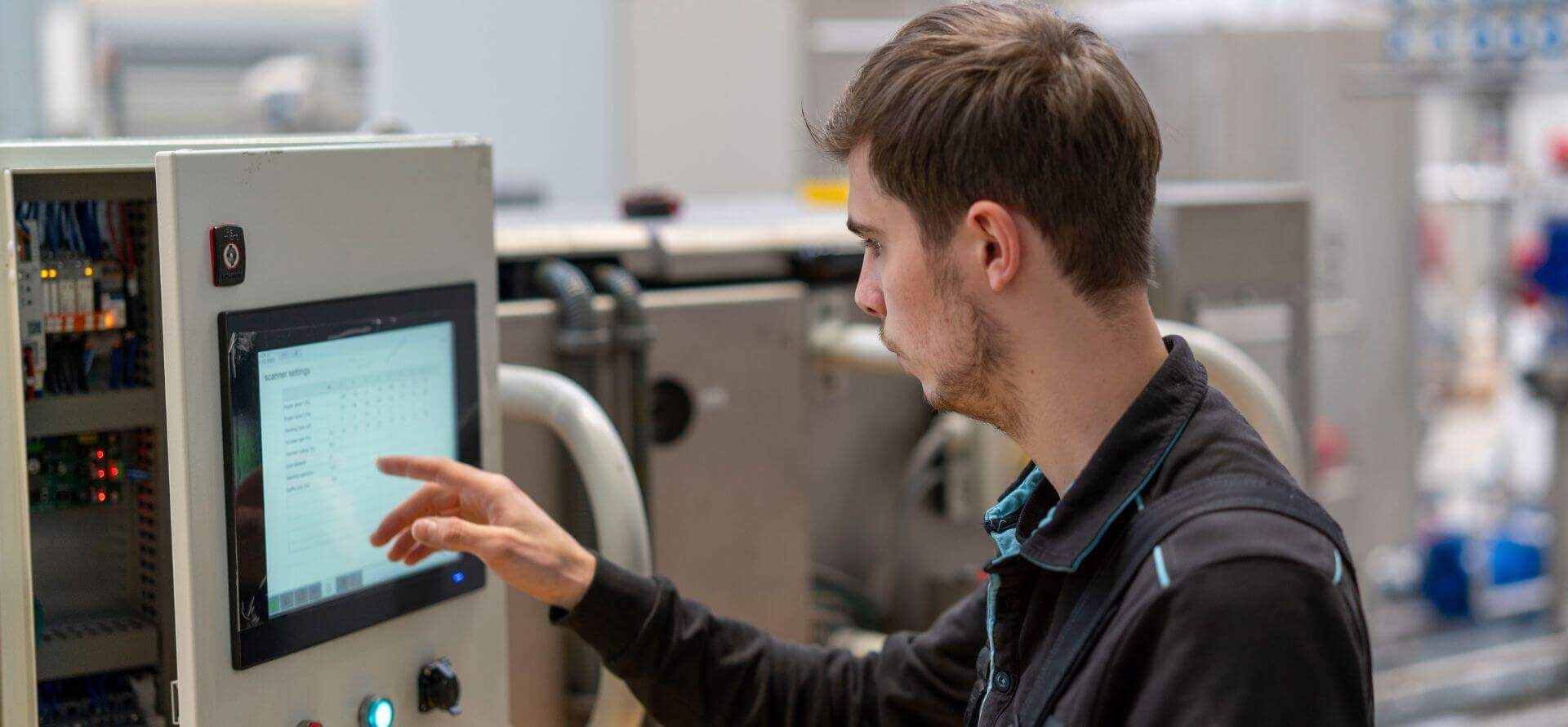-1.png)
Designing for Ease of Use and Reduced Training
Line equipment is designed to be highly reliable and easy to operate to minimize mistakes that lead to reject. A significant aspect of modern extrusion technology is the move towards more operator-friendly systems.
Simplifying Controls and Tasks
Electronic controls, now economically feasible, have replaced older systems, making operation much easier for personnel. Operators require less training to become familiar with settings, such as temperature controls. Routine tasks like administration and registering of line controls are automatically handled without errors.
Empowering Operators with Visual Tools
Visual controls and feedback empower operators. For instance, scanner signals, which previously required an electrician to make visible, are now displayed on the control screen and can be adjusted by operators. This capability removes frustration and allows operators to actively manage aspects of the process, making them feel less helpless and more capable. Controls based on familiar interfaces like Windows are quickly understood. Automatic Temperature Centring (ATC) and scanners are examples of process control systems designed to support the operator and free them from routine jobs.
Technical Specifications
|
Metric |
Description |
|
Training Requirement |
Reduced due to easier electronic controls. |
|
Manual Admin/Registering |
Replaced by automatic, error-free systems. |
|
Scanner Adjustment |
Directly adjustable by operators on screen. |
|
OEE Impact |
Ease of operation contributes to reliability and lower reject, impacting OEE. |
FAQ Section
How do modern extruders reduce the training required for operators?
Modern extruders utilize electronic controls based on familiar interfaces like Windows, which are quickly understood. These systems simplify control settings and automate administrative tasks, reducing the need for extensive training compared to older, more complex control systems.
In what ways do operator-friendly controls improve job satisfaction and efficiency?
Operator-friendly controls improve job satisfaction by providing visual feedback and enabling operators to adjust parameters directly, removing frustration and making them feel more capable. By automating routine tasks and simplifying controls, operators are freed to focus on managing the process effectively, contributing to higher efficiency.
%20(1).jpg) Saurabh Pawar
Saurabh Pawar

.png)
.png)
.png)